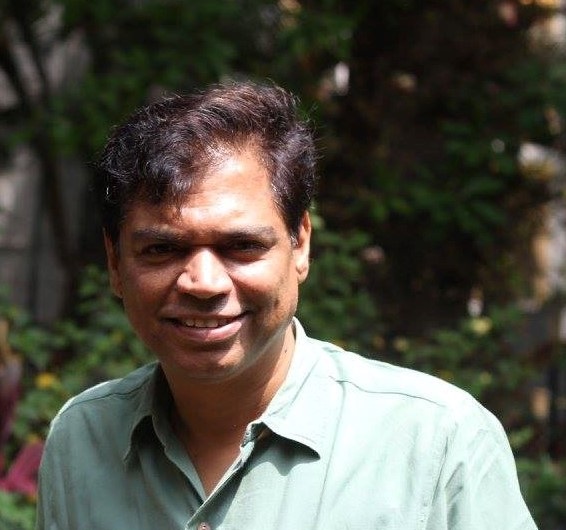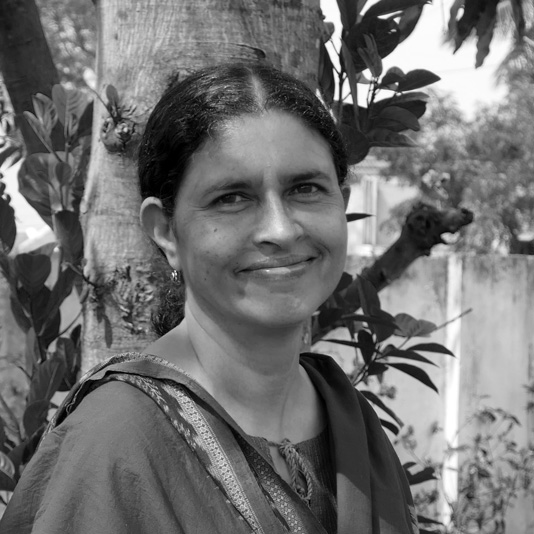COVID-19 has brought upon us an extraordinary situation, throwing our lives into tumult. While the crisis is largely being reported and understood from the biological and epidemiological viewpoints, we tend to sideline the fact that it is essentially a watershed moment in human history. Connect spoke to scholars from the social sciences and humanities about how they view the pandemic.
Sundar Sarukkai, founder of Barefoot Philosophers and visiting faculty at the Centre for Policy and Society (CSP) at IISc

The pandemic is largely being interpreted in terms of medical science. But there is an important philosophical theme that is at the core of our response to this pandemic, which goes back to a major tension between biology and other discourses of the human body. I am referring to the role of the individual in combating diseases. The coronavirus has the potential to attack every individual, but individuals are not equally affected. How can we understand this most important aspect of the pandemic?
The pandemic is largely being interpreted in terms of medical science. But there is an important philosophical theme that is at the core of our response to this pandemic, which goes back to a major tension between biology and other discourses of the human body
Importantly, not all who are exposed to the virus fall ill. Secondly, even for those who ‘have’ the virus, it does not affect them all in the same way. Nearly 85 percent do not even need hospitalization while fatality is only three to five percent. What explains the variance in the responses of different bodies to the same virus? We have been told that the fatal cases have mostly been due to co-morbidities, but it is true that not all infected people who have a heart condition, respiratory problems or diabetes have died. For biology (and for a science that is constructed on classes rather than individuals), the individual is a problem. This is because individuals, even when they have identical (or almost identical) biological components, can have very different responses to their surroundings. This is [also] true for the phenomenon of disease. If biological description is completely deterministic of the way the body works, then how does one account for this variance? If the biological account is not complete, then what is the space of the incompleteness present in our understanding of the body and the notions of disease and health? This problem is well illustrated in the classic paradox of a person who refuses to die even when medically she is not expected to live. There have been many such cases and we usually make sense of this by saying that the will power of the person to live overrides the onset of death. Doctors seem to prefer the ambiguous (philosophical) idea of ‘will power’ or ‘placebo’ to brush aside these questions.
The pandemic has only thrown up many such cases and these should not be seen as exceptions or anomalies. All of them point to the need for a richer and more complex theory of the body, something which many other philosophies, particularly those dealing with health and sickness, around the world, have produced. So maybe the pandemic is a good time for the biologists to be more open to the world of ideas about the human body from many practices and traditions in philosophy, medicine and performance.
Prakash Belawadi, renowned film and theatre artist, and a visiting faculty in the undergraduate programme at IISc

The physical and sensory alienation from fellow beings in a society — in the theatre, concert hall, rock show or even spectator sport or museum — will also alienate the artist from the culture, and the art from the viewer/listener
When we face an adversary so big, the real problem we have to deal with is helplessness. The novel coronavirus itself does not kill as many people as some lifestyle diseases, economic deprivation, or traffic accidents, but we have an illusion of control in these matters. We don’t understand this virus. This scares us and forces us into rationalisation — blame China, human sinning, nature’s revenge and so on. The idea that nature is impersonal is unbearable. This is why disaster literature or cinema looks for human sources and resources for both the crisis and solution. On the effect of the pandemic on the world on art: The worst it does is to destroy community experience of art. It is only when the narrative is located in the context of place and time that we can enjoy its aesthetic. The physical and sensory alienation from fellow beings in a society — in the theatre, concert hall, rock show or even spectator sport or museum — will also alienate the artist from the culture, and the art from the viewer/listener.
Economist Raghavendran Srinivasan, faculty at the National University of Ireland and visiting faculty, CSP

The coronavirus pandemic has inflicted profound impact on the economies of both developed and developing nations. Particularly in the context of developing countries, it has reversed economic growth in a short span of time and has exposed the fragility of the developmental process. The developmental process that views the economy in isolation, devoid of its connections to society and ecology, is bound to be vulnerable to shocks such as this pandemic. The lockdown measure, essentially to protect the inadequate public health system, in fact literally shut down the economy in many countries. Shutting down the economy means stopping the production of non-essential goods and services. This would have a differential impact on the sectors of the economy. In our [India’s] case, the latest estimates show the impact of lockdown on different sectors of production. Between April to June 2020, the most affected sectors in terms of their gross value added (individual contribution to the Gross Domestic Product, or GDP) are: mining and quarrying (- 14.7 percent); construction (- 13.3 percent); electricity, gas, water supply and other utilities (- 13.9 percent); hotels, transport, communication and broadcasting services (- 9.7 percent); manufacturing (- 6.3 percent); and real estate (- 17.3 percent). The impact does not just stay in these sectors, they percolate in the economy as other sectors that are linked to these, are also affected. Thus, the overall GDP in this quarter has shrunk and it is estimated at 4.2 percent in March compared to 6.1 percent in the financial year 2019.
Furthermore, the long term decline in the agriculture sector and the consequent migration of agriculture workers to non-agricultural sectors located in urban areas, triggered the migrant crisis during the lockdown that is not witnessed by the developed countries
There is another dimension to this problem. The sectors that are impacted by the lockdown are some of the most labour-intensive sectors. Moreover, most parts of these sectors are informal. The total share of the informal sector in the Indian economy ranges between 85-93 percent, according to estimates by Niti Aayog and the Economic Survey 2018-19. The informality comes from the lack of legal protection of jobs with no social security and poor working conditions. The latest Periodic Labour Force Supply (PLFS) of 2017-18 notes that even among regular wage/salaried workers in non-agriculture sectors, 71.1 percent had no written job contracts, 54.2 percent were not eligible for paid leave and almost 50 percent had no social security benefits. This means that the government’s stimulus packages with wage-support components may not reach those without proper job contracts and other casual workers in the informal sector. This is where the nature of the economic impact of coronavirus in India is very different from the developed countries. Furthermore, the long term decline in the agriculture sector and the consequent migration of agriculture workers to non-agricultural sectors located in urban areas, triggered the migrant crisis during the lockdown that is not witnessed by the developed countries. The nature of the impact of coronavirus is such that the prospect of recovery post COVID-19 is not going to be one of bouncing back to growth, or v-shaped recovery. The Standard & Poor credit rating agencies forecast a 5 percent contraction in GDP this fiscal year, assuming the outbreak to peak in September later this year. Social distancing measures will stay until a vaccine is developed, which means that for the foreseeable future, the production structure has to adapt according to the rules imposed by the virus and this implies a staggered pick up of employment, demand and growth.
Social Anthropologist A R Vasavi, former Professor at the National Institute of Advanced Studies, and currently a member of the Punarchith Collective

The imposition of the COVID-19 lockdown and the resulting manifold disassembling of the economy and the hardships imposed on the most vulnerable citizens indicate the state’s suspension of reasoning and consideration of local/national specificities. Instead, the unplanned lockdown drew on ideas, imageries, rationale and logic from countries whose requirements and state capabilities were vastly dissimilar to India. Worse still, there was no consideration about the vast numbers of persons whose work and living conditions were not amenable to sanitised, closed lockdowns. In the callous oversight of the working class, the state in its haste focused on staging an event and a condition in which an assumed sense of nationalised security from the virus was disseminated. In reality, the needs, disadvantages, and precarity of a vast number of people were overlooked and what we have are a series of state-managed lockdowns whose effect in each phase has been to unravel the nation to worse conditions. The most glaring omission has been the failure to recognise and acknowledge that the virus was carried by international travellers and what was required was targeted and focused quarantining of such travellers and their contacts and not the forced quarantining of a nation. The victims of such an oversight have been not only the working classes of the urban areas but also the vast rural hinterland which has been gone into a tailspin with its rural economy disrupted, the remittance economy evaporated, and a mass of urban workers now returning as dependents on already hard-pressed families.
For the scientific community, the COVID-19 and the aftermath of the lockdown must become a watershed/catalytic moment that calls on all of us to assert the integrity of science which in its true calling must be to serve a larger public good and not that of either private gains or subservience to despotic masters
Beyond the opportunistic callousness in which the ruling dispensation has used the lockdown to disseminate a cultural logic of safety and security, we need to critically interrogate dominant scientific rationale in which the COVID-19 pandemic and its trajectory have been represented. Statistics and forecast model-based information that draw on nomothetic (number-based) data and logic have been given primacy over ideographic (descriptive) data and understanding. Missing in such nomothetic assertions (often presented as high science that is infallible), are details of the specificities of a vast and complex nation, its populations, economies and social conditions. That such ‘scientific posturing’ has been made by teams and persons closely aligned and subservient to the political dispensation indicates the extent to which reliable scientific expertise has been marginalised and or ignored. The results have been not only the failure to contain the virus but also the moral, political and economic failure to deploy any sensitivity and concern to dealing with the distress that has spread across the nation. For the scientific community, the COVID-19 and the aftermath of the lockdown must become a watershed /catalytic moment that calls on all of us to assert the integrity of science which in its true calling must be to serve a larger public good and not that of either private gains or subservience to despotic masters.
For more stories about the COVID-19 crisis, click on the links below:
Tracking the Scourge: Diagnostics, Testing and Vaccines for COVID-19




